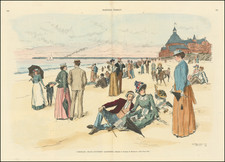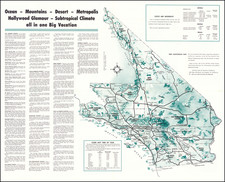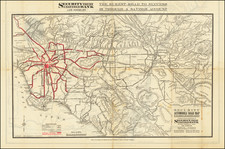Colonel George Ruhlen Locates The Coronado Beach Military Reservation
This detailed 1920 map of San Diego Bay, produced by the United States Coast and Geodetic Survey, captures the intricate shoreline, bathymetric contours, and prominent landmarks of the bay area, reflecting its strategic significance and maritime activity during the early 20th century. The map serves not only as a navigational aid but also as a historical document showcasing the development and urbanization patterns of San Diego and surrounding regions, including National City and Coronado.
The map is from the collection of Colonel George Ruhlen and was likely used by Colonel Ruhlen during the planning of the defense of San Diego Harbor immediately after Pearl Harbor (see biography below).
San Diego Bay, a natural harbor with a rich history, has been a focal point of maritime activity since the Spanish explorers first navigated its waters in the 16th century. By the early 20th century, the bay had become a critical hub for both commercial and military operations. The map’s meticulous detail offers insight into the area's topography, with soundings indicating depths and navigational hazards, essential for safe passage of vessels.
Coronado Beach Military Reservation
A notable feature on the map is the penciled annotation indicating the site of the Coronado Beach Military Reservation, encompassing 40.63 acres. Established in 1897 during the Endicott Period, this reservation was part of the broader Harbor Defense of San Diego. Initially intended to house a mortar battery, the site evolved over time, especially during World War II. It accommodated fire control towers and searchlight stations, vital for the coastal defense systems of Batteries Strong, Humphreys, Battery 134, and Battery Grant. The Anti-Motor Torpedo Boat Battery Cortez, although no longer extant, was a significant installation during this period.
During World War II, the reservation expanded its role with the construction of two 150-foot fire control towers, searchlight stations, and additional gun batteries, underscoring its importance in coastal defense. The reservation, located southeast of Coronado Beach, was integral to the region's military strategy, particularly in monitoring and defending against potential naval threats.
Post-World War II, the Coronado Beach Military Reservation was deactivated in 1946, and the area transitioned to civilian use. Today, it forms part of the Silver Strand State Beach.














![[ Del Mar, California ] The Village of Del Mar on Historic 101](https://storage.googleapis.com/raremaps/img/small/90889.jpg)

![[Early Landsat Photograph of San Diego]](https://storage.googleapis.com/raremaps/img/small/90466.jpg)